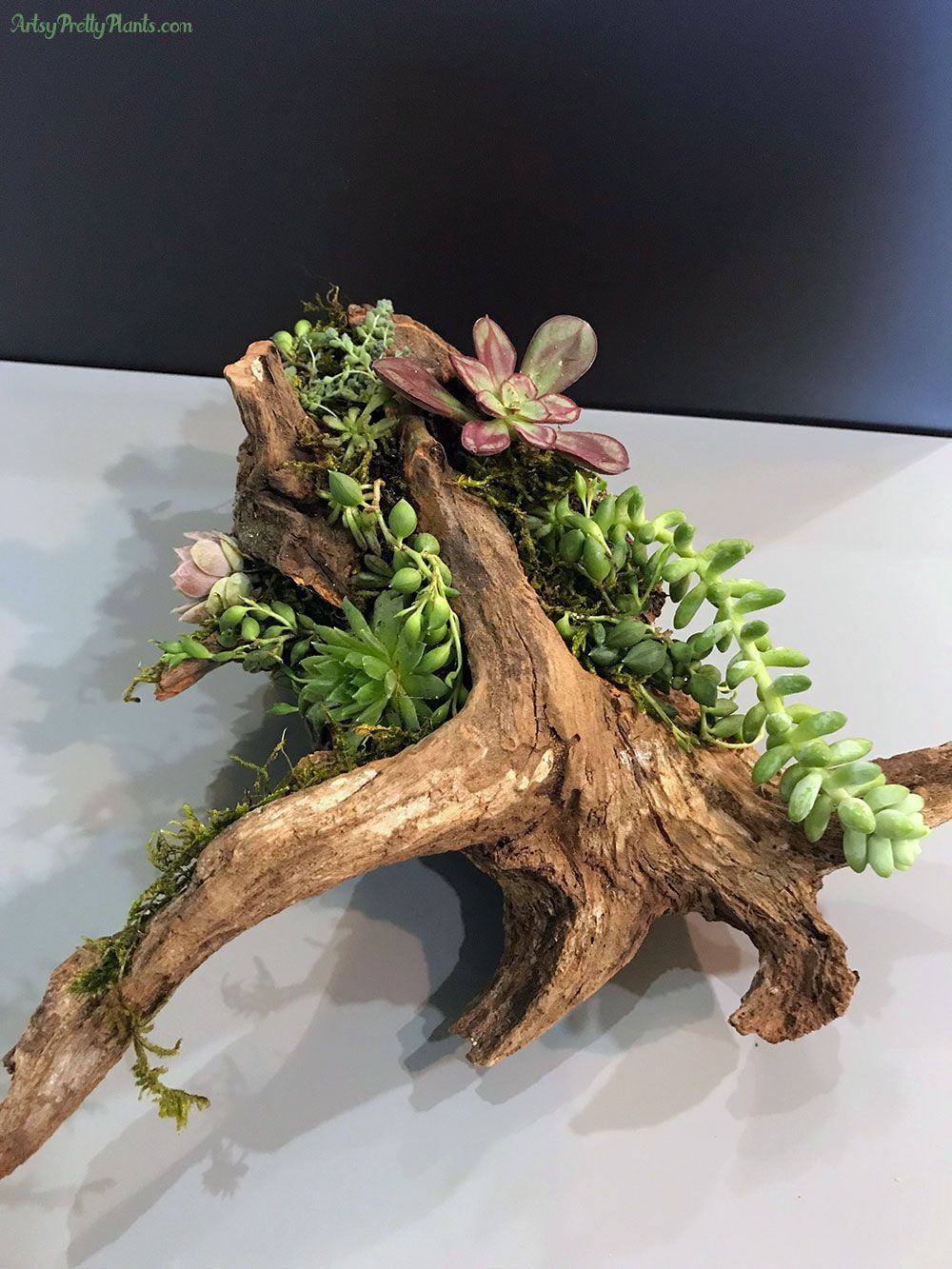Are you a beginner looking to start your own container garden but don’t know where to begin? Look no further. In this article, we will provide you with all the essential container gardening ideas for beginners to get you started on the right track. Whether you have limited outdoor space or simply want to add greenery to your home, container gardening is a great way to cultivate your own plants in a manageable and rewarding way.
Container gardening offers a convenient and flexible approach to gardening, allowing you to grow a variety of plants in smaller spaces such as balconies, patios, or even windowsills. This introductory section will guide beginners through the key considerations and steps of starting their very own container garden. From choosing the right containers and soil to understanding sunlight and watering needs, we will cover everything you need to know to kickstart your container gardening journey.
In the following sections, we will delve deeper into specific aspects of container gardening such as selecting the perfect plants for beginners, essential tools and supplies, maximizing space and aesthetics, overcoming common challenges, and creating a maintenance schedule for successful container gardening. By the end of this article, you will be equipped with the knowledge and confidence to embrace the beauty and rewards of container gardening. So let’s get started.
Choosing the Right Containers and Soil
When it comes to container gardening, choosing the right containers and soil is crucial for the success of your plants. For beginners, it’s important to start with the basics and understand what works best for different types of plants.
First, let’s talk about containers. When starting out with container gardening, it’s important to choose containers that have good drainage. This means selecting pots or planters that have holes in the bottom to allow excess water to escape, preventing root rot. Additionally, consider the size of the containers based on the mature size of the plants you want to grow. Larger plants will need larger containers to accommodate their roots and provide stability.
Next, let’s focus on soil. The type of soil you use for your container gardening plays a significant role in the overall health and growth of your plants. As a beginner, using a high-quality potting mix specifically designed for containers is recommended. These mixes are lightweight, well-draining, and contain essential nutrients to support plant growth. Avoid using garden soil from your yard as it may compact in containers and hinder root development.
When considering container gardening ideas for beginners, understanding how to choose the right containers and soil is essential for setting a solid foundation for successful plant growth. By investing in proper containers with good drainage and quality potting mix specifically designed for container gardening, beginners can create an ideal environment for their plants to thrive.
By paying attention to these key elements of container gardening, beginners can set themselves up for success as they embark on their journey into this rewarding and beautiful hobby.
Selecting the Perfect Plants for Beginners
When it comes to container gardening, choosing the right plants is crucial, especially for beginners. Whether you have limited space or just want to add greenery to your patio or balcony, there are plenty of options that are perfect for those who are new to gardening. One of the best container gardening ideas for beginners is to start with easy-to-care-for plants such as herbs, salad greens, and flowers.
Herbs like basil, rosemary, and thyme are excellent choices for beginner container gardeners because they don’t require a lot of maintenance and can thrive in small spaces. Similarly, salad greens such as lettuce and arugula are great options for those looking to grow their own fresh produce without needing a large garden. Additionally, flowers like marigolds and petunias can add a pop of color to your outdoor space while being relatively low-maintenance.
It’s also important for beginners to consider the climate in their area when selecting plants for their container garden. Some plants may require more sunlight or water than others, so it’s essential to choose varieties that will thrive in the conditions you can provide. With the right selection of plants, even novice gardeners can create a beautiful and thriving container garden.
| Plant Type | Benefits |
|---|---|
| Herbs (Basil, Rosemary, Thyme) | Low maintenance, can thrive in small spaces |
| Salad Greens (Lettuce, Arugula) | Provide fresh produce without needing a large garden |
| Flowers (Marigolds, Petunias) | Add color to outdoor space while being low-maintenance |
Understanding Sunlight and Watering Needs
Sunlight Requirements
Before starting your container garden, it’s important to understand the sunlight requirements of the plants you choose. Some plants prefer full sun, while others thrive in partial or even full shade. Take note of the sunlight patterns in your outdoor space and select plants that are suitable for the available light conditions. For beginners, it’s advisable to choose low-maintenance plants that can tolerate varying degrees of sunlight, such as herbs like mint, basil, and rosemary.
Watering Needs
Proper watering is essential for the success of your container garden. Different plants have different watering needs, so it’s crucial to understand the requirements of each type of plant you’re growing. Overwatering can lead to root rot, while underwatering can cause wilting and stunted growth.
Consider investing in a moisture meter to accurately gauge the moisture level in your containers. For beginners, it’s recommended to start with plants that are forgiving when it comes to watering, such as succulents and cacti.
Balancing Sunlight and Watering
Finding the right balance between sunlight and watering is key to maintaining healthy plants in your container garden. Monitor the moisture level in the soil regularly, especially during hot summer months. Be mindful of how much sunlight your plants are receiving and adjust your watering schedule accordingly. It may take some trial and error to find the perfect balance for your specific combination of plants, but with time and experience, you’ll become more attuned to their individual needs.
By understanding the sunlight and watering requirements of your container garden plants, you’ll be better equipped to provide them with optimal growing conditions for a bountiful harvest or beautiful display throughout the growing season.
Essential Tools and Supplies for Container Gardening
When starting your container gardening journey, it’s crucial to have the right tools and supplies to ensure the success of your plants. Here are some essential items that every beginner in container gardening should consider:
- Quality potting mix: A good potting mix is essential for container gardening as it provides the necessary nutrients and drainage for your plants to thrive.
- Containers: Choose containers that are the appropriate size for the plants you want to grow, with sufficient drainage holes at the bottom to prevent waterlogging.
- Watering can or hose: Consistent watering is key in container gardening, so having a watering can or hose will help you keep your plants hydrated.
- Gardening gloves: Protect your hands from dirt, scratches, and potential allergens with a sturdy pair of gardening gloves.
In addition to these basic tools and supplies, there are also certain accessories that can aid in the success of your container garden:
- Fertilizer: Consider including a slow-release fertilizer to provide your plants with continuous nutrients throughout their growing season.
- Hand trowel and pruners: These tools will come in handy for planting, transplanting, and pruning your container garden.
- Drip trays or saucers: To protect surfaces from water damage and prevent overwatering, use drip trays or saucers underneath your containers.
By having these essential tools and supplies on hand, you’ll be well-equipped to embark on your container gardening journey with confidence. They will help you create a thriving and beautiful garden space, even as a beginner just starting out. With these supplies in tow, you can dive into the world of container gardening ideas for beginners headfirst.
Tips for Maximizing Space and Aesthetics
When it comes to container gardening, maximizing space and creating a visually appealing garden is essential, especially for beginners. To make the most of your limited space, consider adding vertical elements to your garden. Use trellises, hanging baskets, or tall plants to add height and interest to your container garden. This not only allows you to grow more plants in a small area but also adds a sense of depth and variety to your garden.
Another great way to maximize space in container gardening is by choosing compact or dwarf varieties of plants. Many vegetables, herbs, and flowers come in smaller sizes that are perfectly suited for containers. Look for words like “patio,” “bush,” or “dwarf” when selecting plants for your containers. These smaller varieties will still provide a bountiful harvest or beautiful blooms while taking up less space.
Aesthetics is also an important aspect of container gardening for beginners. Consider the color and texture of both the plants and containers when planning your garden. Mixing different colors, heights, and textures can create an aesthetically pleasing arrangement. Additionally, choosing attractive containers such as ceramic pots, wooden boxes, or decorative planters can enhance the overall look of your container garden.
| Maximizing Space Tips | Aesthetics Tips |
|---|---|
| Add vertical elements (trellises, hanging baskets) | Consider color and texture when choosing plants and containers |
| Choose compact or dwarf plant varieties | Use attractive containers (ceramic pots, wooden boxes) |
Dealing With Common Container Gardening Challenges
Container gardening can be a rewarding and fulfilling hobby, but it also comes with its own set of challenges. One common issue that beginners may encounter is the problem of overwatering or underwatering their plants.
Understanding the specific watering needs of each plant, as well as the type of soil and container used, is essential in order to maintain healthy growth. To avoid this common challenge, beginners should consider investing in a moisture meter to accurately determine when their plants need watering.
Another challenge that beginner container gardeners may face is the occurrence of pests and diseases. Inspecting plants regularly for signs of pests such as aphids, mites, or caterpillars, and addressing any issues promptly is crucial in preventing an infestation.
Additionally, using organic pest control methods and keeping a clean and tidy garden space can help minimize the risk of disease and pest problems. With attention to detail and proper care, these challenges can be effectively managed to ensure thriving container gardens.
Lastly, limited space can pose a challenge for novice container gardeners who want to maximize their planting options. To address this issue, utilizing vertical gardening techniques such as trellises or hanging planters can make use of vertical space and allow for a greater variety of plants.
Additionally, selecting compact or dwarf varieties of vegetables and herbs can help optimize space while still providing an abundance of fresh produce. By applying innovative solutions and techniques, beginner container gardeners can overcome these challenges to create successful and flourishing gardens.
Overall, by being aware of potential challenges that may arise in container gardening and taking proactive steps to address them, beginners can enjoy the beauty and rewards that come with nurturing their own thriving green spaces.
Creating a Maintenance Schedule for Successful Container Gardening
Weekly Maintenance Tasks
Once you have established your container garden, it is important to set a regular maintenance schedule to ensure the health and beauty of your plants. Weekly tasks should include checking for any signs of pests or diseases, removing dead or yellowing leaves, and checking the moisture level of the soil. Additionally, watering and fertilizing should be done on a consistent basis to provide the necessary nutrients for plant growth.
Monthly Maintenance Tasks
On a monthly basis, it is important to assess the overall health of your container garden. This includes inspecting the containers for any damage or wear, as well as giving the plants a more thorough inspection for any signs of stress or deficiencies. Pruning and trimming may also be necessary depending on the type of plants you have chosen for your container garden.
Seasonal Maintenance Tasks
As the seasons change, so will the needs of your container garden. In preparation for winter, it is important to protect your plants from frost by bringing them indoors or covering them with insulating materials. In spring, you may need to repot some of your plants into larger containers to accommodate their growth. Each season may also require adjustments in watering frequency and fertilization based on the changing needs of the plants.
By creating a maintenance schedule that covers weekly, monthly, and seasonal tasks, beginner container gardeners can ensure that their plants receive the care they need to thrive. Following this structured approach will help novice gardeners develop healthy habits and enjoy successful container gardening throughout the year.
Conclusion
In conclusion, container gardening is an incredibly rewarding and enjoyable hobby for beginners to take up. By following the tips and guidelines provided in this article, anyone can create a beautiful and thriving garden in even the smallest of spaces. From choosing the right containers and soil to understanding plant needs and maximizing space, there are endless possibilities for creating a lush and vibrant container garden.
As mentioned, container gardening is a wonderful way for beginners to ease into the world of gardening. With the right tools, supplies, and maintenance schedule, anyone can experience the satisfaction of nurturing their own plant life. Additionally, by understanding sunlight and watering needs, individuals can ensure that their plants receive the proper care they need to flourish.
In closing, embracing the beauty and rewards of container gardening is not only achievable but also incredibly gratifying. This beginner-friendly form of gardening allows individuals to express their creativity while enhancing their living spaces with greenery. With these container gardening ideas for beginners in mind, anyone can start their own journey towards experiencing the joy of cultivating their own mini oasis.
Frequently Asked Questions
How Do You Start a Container Garden for Beginners?
Starting a container garden for beginners is fairly easy. Choose a large enough pot with good drainage, fill it with high-quality potting soil, and select plants that are suitable for containers and your local climate. Don’t forget to water and fertilize regularly.
What Are the Easiest Things to Grow in Pots?
The easiest things to grow in pots are herbs like basil, parsley, and mint, as well as small vegetables like cherry tomatoes, peppers, and lettuce. These plants don’t require a lot of space and can thrive in containers on a balcony or patio.
What Is the Rule of Thumb for Container Gardening?
The rule of thumb for container gardening is to make sure your pots have good drainage holes to prevent waterlogging the soil. Use high-quality potting mix that retains moisture but also drains well.
Additionally, be mindful of the size of the plant when choosing a container – smaller plants can thrive in smaller pots, while larger plants need more room to grow. Lastly, remember to water your container garden regularly as pots tend to dry out faster than traditional gardens.

Welcome to my gardening blog! I am passionate about plants and enjoy sharing my knowledge and experiences with others. In this blog, I will write about everything related to gardening, from tips on how to get started to updates on my own garden projects.





